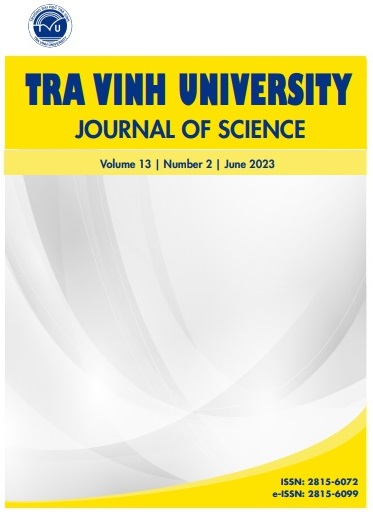TOTAL FLOAT MANAGEMENT TECHNIQUE UNDER THE FLOAT AND RESOURCE LOADING
Main Article Content
Abstract
Schedule delays in construction projects are a common occurrence and have a significant impact on the overall project duration. Plentiful delay analysis techniques have been proposed and utilized to resolve these issues.
The total float management method is widely accepted and considered the most fundamental approach as it effectively resolves four major delay issues and measures float consumption. However, current delay analysis techniques have often overlooked the allocation of float and resources, which can remarkably affect the determination of delay responsibilities for involved parties. This study aims to enhance the total float management approach by intensively incorporating float and resource loading considerations before delay
analysis implementation. The research methodology includes an extensive literature review, identification of crucial issues related to schedule delays arising from the lack of resource and total float allocation, and the application of enhanced total float management under float and resource loading through a case study for test validation. The research findings provide transparent insights into delay liability considering both time delays and float consumption and emphasize the importance of float and resource allocation in the early stages of construction projects for a consensus before analyzing and assigning delay responsibilities. Future studies could focus on legalizing the procedural considerations of float ownership and resource allocation in contract
agreements.
Downloads
Article Details
References
of Time. Journal of Professional Issues in Engineering Education and Practice. 2007;133(3): 218–228.
[2] C¸ evikbas¸ M, Is¸ık Z. An overarching review on
delay analyses in construction projects. Buildings.
2021;11(3): 109.
[3] Bubshait A, Cunningham M. Comparison of delay
analysis methodologies. Journal of Construction Engineering and Management. 1998;124(4): 315–322.
[4] Mohan SB, Al-Gahtani KS. Current delay analysis techniques and improvements. Cost Engineering.
2006;48(9): 12–21.
[5] Kao CK, Yang JB. Comparison of windows-based delay analysis methods. International Journal of Project
Management. 2009;27(4): 408–418.
[6] Braimah N. Construction delay analysis techniques- A
review of application issues and improvement needs.
Buildings. 2013;3(3): 506–531.
[7] C¸ evikbas¸ M, Okudan O, Is¸ık Z. New delayanalysis method using modified schedule and
modified updated schedule for construction
projects. Journal of Construction Engineering
and Management. 2022;148(11): 04022119.
https://doi.org/10.1061/(ASCE)CO.1943-
7862.0002394.
[8] Arditi D, Pattanakitchamroon T. Selecting a delay analysis method in resolving construction
claims. International Journal of Project Management.
2006;24(2): 145–155.
[9] Ibbs W, Nguyen L. Schedule analysis under the effect
of resource allocation. Journal of Construction Engineering and Management. 2007;133(2): 131–138.
[10] Al-Gahtani K, Float allocation using the total risk
approach. Journal of Construction Engineering and
Management. 2009;135(2): 88–95.
[11] Bhih M, Hegazy T. Enhanced daily windows
delay-analysis technique. Journal of Legal
Affairs and Dispute Resolution in Engineering
and Construction. 2021;13(3): 04521012. https://doi.org/10.1061/(ASCE)LA.1943-
4170.0000475.
[12] Al-Gahtani KS. A comprehensive construction delay
analysis technique: Enhanced with a float ownership
concept. PhD Thesis. State University of New York
at Buffalo: Ann Arbor. 2006.
[13] Yang JB, Kao CK. Review of delay analysis methods:
A process-based comparison. Open Construction and
Building Technology Journal. 2009;3(1): 81–89.
[14] Kim K, de la Garza J. Evaluation of the resourceconstrained critical path method algorithms. Journal of Construction Engineering and Management.
2005;131(5): 522–532.
[15] Oxford Learner’s Dictionaries. The Oxford
Advanced Learner’s Dictionary [Internet].
http://www.oxfordlearnersdictionaries.com/definition
/english/delay_1. [Accessed 20th September 2022]
[16] Stumpf GR. Schedule delay analysis. Cost Engineering. 2000;42(7): 32–43.
[17] Ponce de Leon G. Theories of concurrent delays.
AACE Transactions. 1987;6: 1–5.
[18] Zack Jr JG. Pacing delays - the practical effect. Cost
Engineering. 2000;42(7): 23–28.
[19] Kartam S. Generic methodology for analyzing delay
claims. Journal of Construction Engineering and
Management. 1999;125(6): 409–419.
[20] Arditi D, Robinson MA. Concurrent delays in construction litigation. Cost Engineering. 1995;37(7): 20.
[21] Baram GE. Concurrent delays what are they and how
to deal with them?. AACE International Transactions.
2000: R7.1–R7.8.
[22] Ibbs W, Nguyen L, Simonian L. Concurrent delays
and apportionment of damages. Journal of Construction Engineering and Management. 2011;137(2):
119–126.
[23] Kraiem Z, Diekmann J. Concurrent delays in construction projects. Journal of Construction Engineering and Management. 1987;113(4): 591–602.
[24] Muhanad AO. Integrated Forensic Delay Analysis
Framework for Construction Projects –Time and
Cost Perspectives. PhD Thesis. Concordia University;
2011.
[25] Yang JB, Kao CK. Critical path effect based delay
analysis method for construction projects. International Journal of Project Management. 2012;30(3):
385–397.
[26] Yang JB, Huang KM, Lee CH, Chiu CT. Incorporating lost productivity calculation into delay analysis
for construction projects. KSCE Journal of Civil
Engineering. 2014;18(2): 380–388.
[27] Alkass S, Mazerolle M, Harris F. Construction delay
analysis techniques. Construction Management and
Economics. 1996;14(5): 375–394.
[28] Ng ST, Skitmore M, Deng MZ, Nadeem A. Improving
existing delay analysis techniques for the establishment of delay liabilities. Construction Innovation.
2004;4(1): 3–17.
[29] Bhih M, Hegazy T. Improving concurrency
assessment and resolving misconceptions about
but-for delay analysis technique. Journal
of Legal Affairs and Dispute Resolution in
Engineering and Construction. 2020;12(2):
04520007. https://doi.org/10.1061/(ASCE)LA.1943-
4170.0000378.
[30] Kim Y, Kim K, Shin D. Delay analysis method using
delay section. Journal of Construction Engineering
and Management. 2005;131(11): 1155–1164.
[31] Bhih M, Hegazy T. Enhanced but-for method to apportion net delays and accelerations. Journal of Construction Engineering and Management. 2021;147(7):
06021003. https://doi.org/10.1061/(ASCE)CO.1943-
7862.0002094.
[32] Birgonul M, I Dikmen S. Bektas. Integrated
approach to overcome shortcomings in current
delay analysis practices. Journal of Construction
Engineering and Management. 2015;141:
04014088. https://doi.org/10.1061/(ASCE)CO.1943-
7862.0000946.
[33] Trauner TJ, Manginelli W, Lowe J, Nagata M, Furniss
B. Project Scheduling. Construction Delays. 2th ed.
Boston: Butterworth-Heinemann; 2009. p.1–23.
[34] Prateapusanond A. A comprehensive practice of total
float pre-allocation and management for the application of a CPM-based construction contract. PhD
thesis. Virginia Polytechnic Institute and State University: Ann Arbor; 2004.
[35] Al-Gahtani KS, Mohan SB. Total float management
for delay analysis. Cost Engineering. 2007;49(2): 32–
37.
[36] Kim K, de la Garza, Phantom Float JM. Journal of Construction Engineering and Management.
2003;129(5): 507–517.
[37] Bhih MT. Hegazy. Multiple-window modified butfor analysis of project delays and accelerations. International Journal of Construction Management.
2023;23(4): 686–696.
[38] Huynh H, Lucko G, Eid M. Game theory
approach for concurrent delay analysis.
Journal of Construction Engineering and
Management. 2023;149(3): 04023002.
https://doi.org/10.1061/JCEMD4.COENG-12947.
